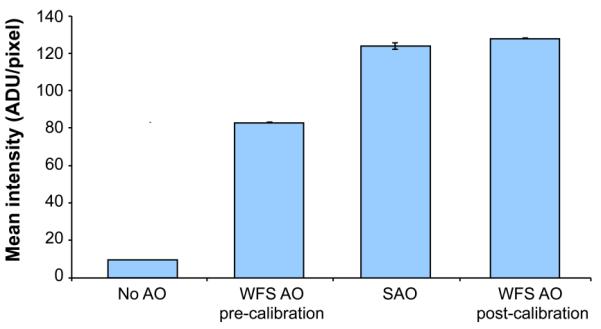Fig. 3.

Sensorless adaptive optics control performance and non-common path error correction for wavefront sensor based adaptive optics in a model eye. Image intensities were 50% higher with sensorless control (SAO) than with traditional wavefront sensor based control (WFS AO pre-calibration). After using sensorless adaptive correction to calibrate for non-common path errors between the PMT and SHWFS (total rms wavefront error ~0.05 microns over the system pupil), the performance of wavefront sensor based control (WFS AO post-calibration) improved to the level of sensorless control. Error bars are ±1 standard deviation of the mean image frame intensity after convergence. Note that absolute intensity cannot be compared with that in Fig. 2b. due to different adjustments of the PMT gain between the two data sets.
